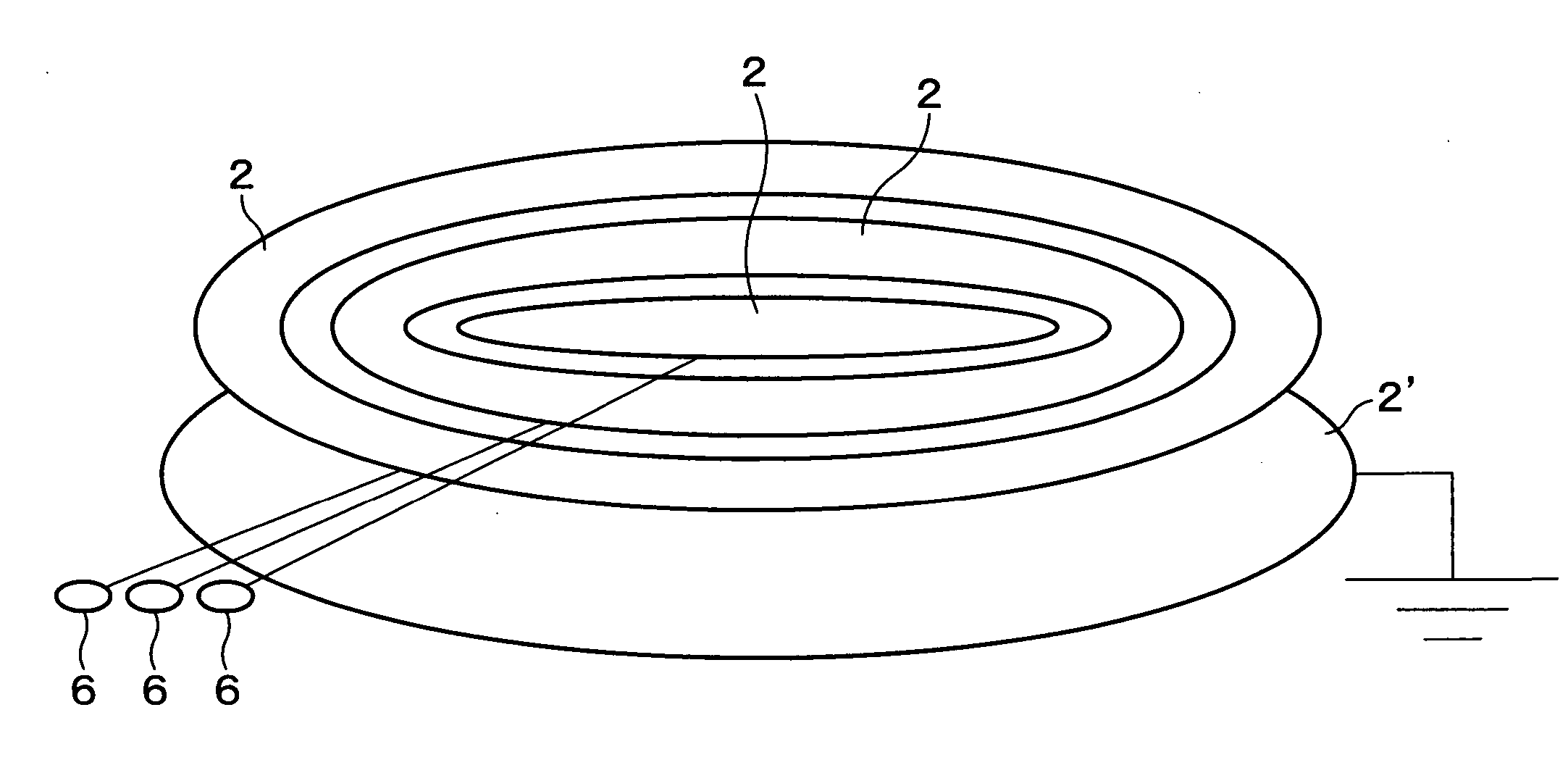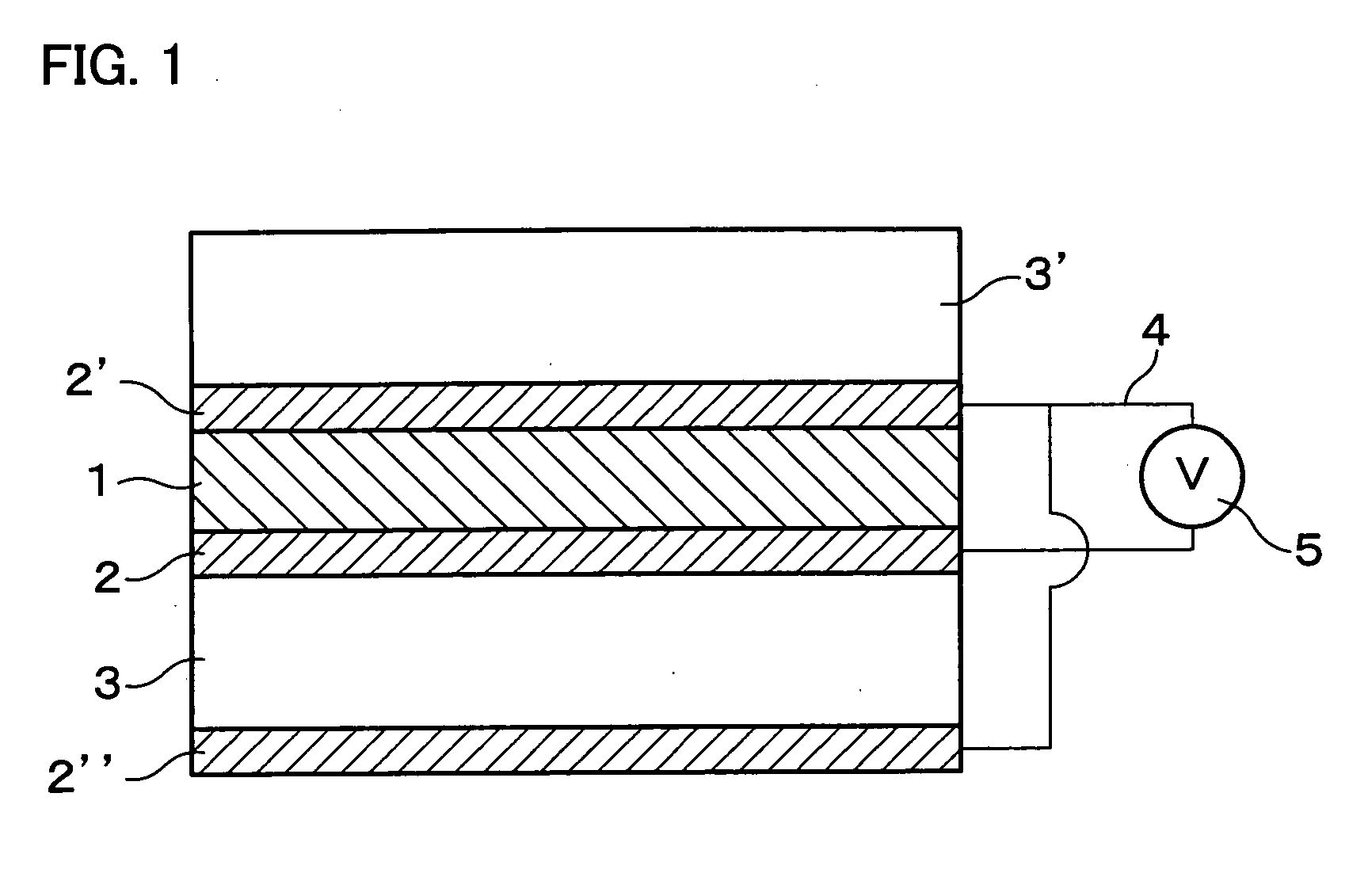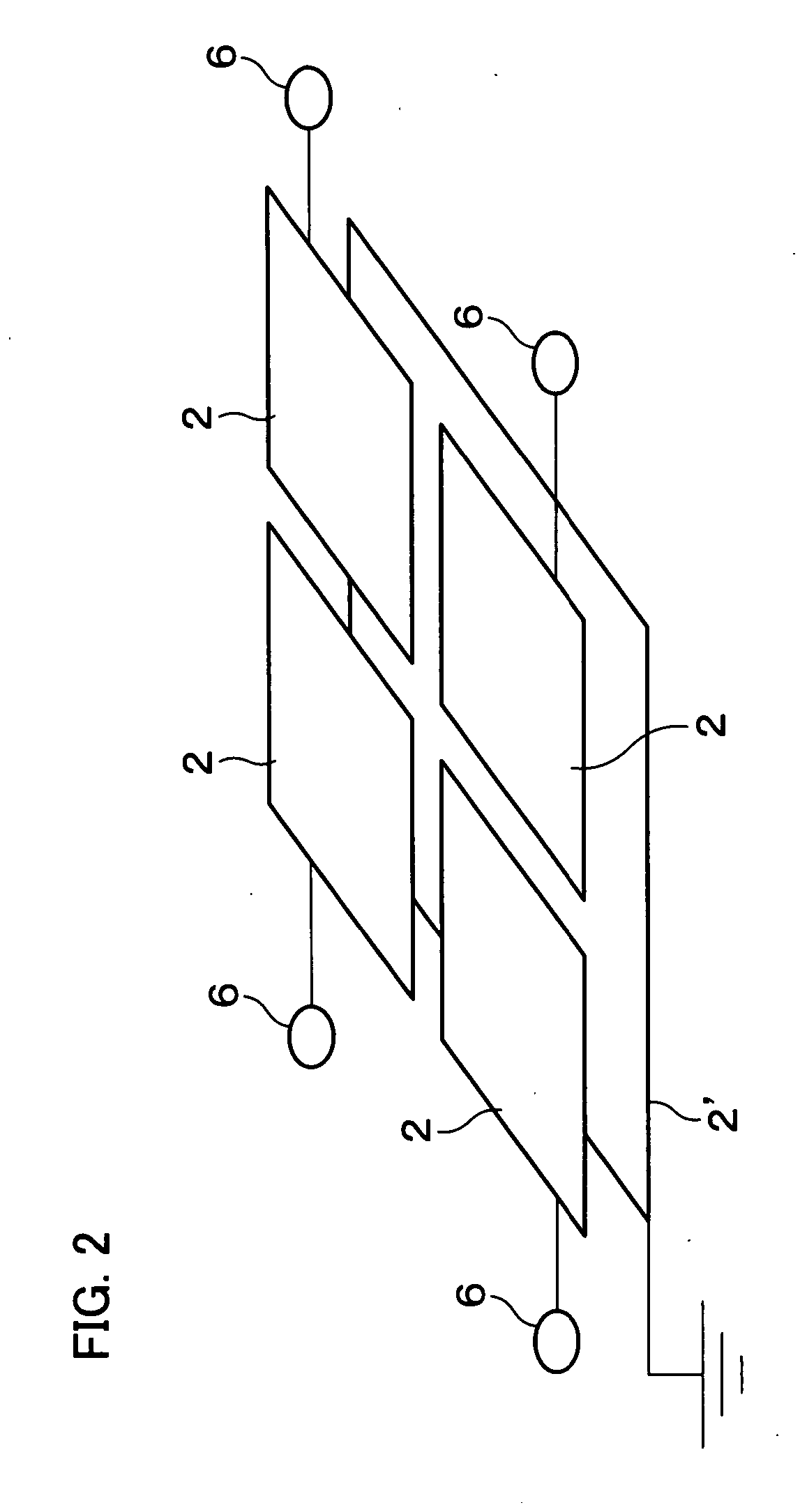Piezoelectric sensor and input device comprising same
a technology of piezoelectric sensor and input device, which is applied in the direction of force measurement using piezo-resistive materials, instruments, fluid pressure measurement, etc., can solve the problems of complex structure, impaired durability, and difficulty in dealing with simultaneous multipoint contact, and achieves improved piezoelectric properties, improved piezoelectric properties, and excellent heat resistance.
- Summary
- Abstract
- Description
- Claims
- Application Information
AI Technical Summary
Benefits of technology
Problems solved by technology
Method used
Image
Examples
first embodiment
[0098] One embodiment of the present invention is described below with reference to FIGS. 1 to 4. Note that, this is not for limitation of the present invention.
[0099] A piezoelectric sensor according to the present invention is arranged so that a laminated electrode constituted of transparent conductor film layers opposite to each other and a transparent pressure-sensitive layer (piezoelectric element) having a piezoelectric property interposed therebetween are laminated and integrated on a pair of transparent substrates opposite to each other. As a whole, the piezoelectric sensor is a transparent piezoelectric sensor.
[0100] First, an arrangement of the piezoelectric sensor according to the present embodiment will be described.
[0101]FIG. 1 is a cross-sectional view illustrating a structure of the piezoelectric sensor according to the present embodiment. As illustrated in FIG. 1, the piezoelectric sensor of the present embodiment is constituted of: a transparent pressure-sensitiv...
example 1
[0136] An example of the piezoelectric sensor according to the First Embodiment will be described below.
[0137] A glass substrate with ITO (i.e., a glass substrate whose one surface is coated with ITO) was used as a transparent substrate and a transparent conductor film layer. The glass substrate with ITO had a thickness of 1 mm. Next, a thin film of aluminum nitride with a thickness of 1 μm serving as a transparent pressure-sensitive layer was formed on ITO of the glass substrate with ITO by a sputtering process.
[0138] Then, another glass substrate with ITO was prepared, and its ITO layer was bonded to the transparent pressure-sensitive layer of aluminum nitride with a cyanoacrylate-based binder.
[0139] That is, the piezoelectric sensor of the present invention was made of a glass substrate (transparent insulative substrate layer), ITO (a transparent conductor film layer), aluminum nitride (a piezoelectric element), ITO (a transparent conductor film layer), a glass substrate (tran...
second embodiment
[0143] One embodiment of the present invention will be described below with reference to FIGS. 6 and 7.
[0144] A metal diaphragm (pressure transmission means) having the piezoelectric thin film layer (piezoelectric element) is press-fitted into an opening end of a hole, leading into an internal-combustion cylinder, of a main metal body, and constitutes a piezoelectric sensor for detecting a phenomenon in the cylinder.
[0145]FIG. 6 is a longitudinal sectional view of the piezoelectric sensor of the present embodiment for measuring internal pressure of an internal-combustion cylinder.
[0146] The piezoelectric sensor, constituted of a signal transmission section 15, pressure detection means 23, and a cap 24, detects pressure exerted from a space on the pressure detection means 23 side so as to output an electrical signal.
[0147] The pressure detection means 23, provided at a detection opening, receives pressure and converts the pressure into an electrical signal. The pressure detection...
PUM
| Property | Measurement | Unit |
|---|---|---|
| thickness | aaaaa | aaaaa |
| thickness | aaaaa | aaaaa |
| operating temperature | aaaaa | aaaaa |
Abstract
Description
Claims
Application Information
 Login to View More
Login to View More - R&D
- Intellectual Property
- Life Sciences
- Materials
- Tech Scout
- Unparalleled Data Quality
- Higher Quality Content
- 60% Fewer Hallucinations
Browse by: Latest US Patents, China's latest patents, Technical Efficacy Thesaurus, Application Domain, Technology Topic, Popular Technical Reports.
© 2025 PatSnap. All rights reserved.Legal|Privacy policy|Modern Slavery Act Transparency Statement|Sitemap|About US| Contact US: help@patsnap.com



